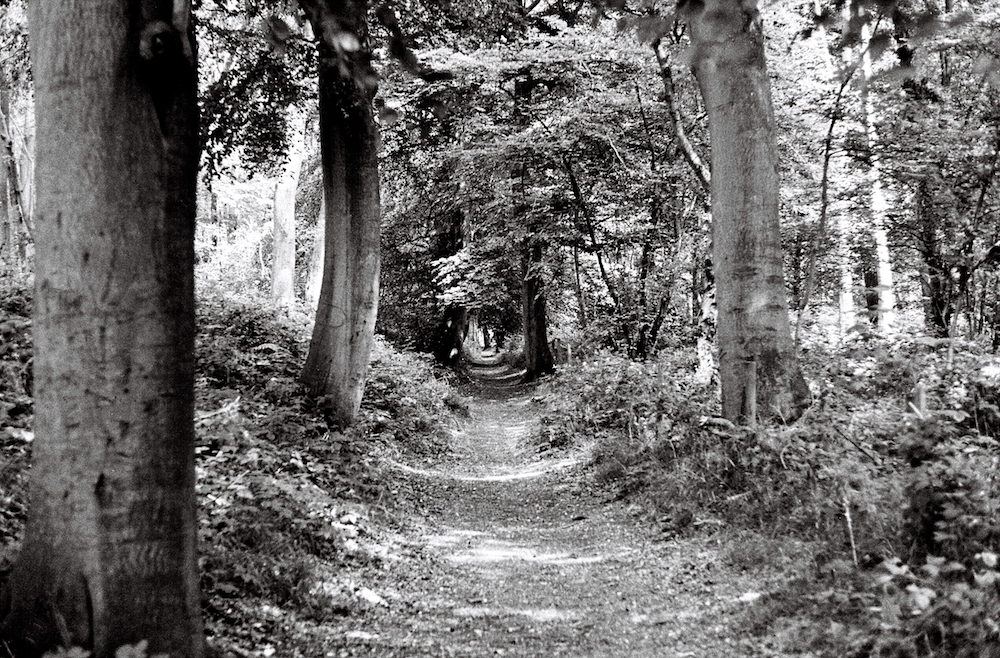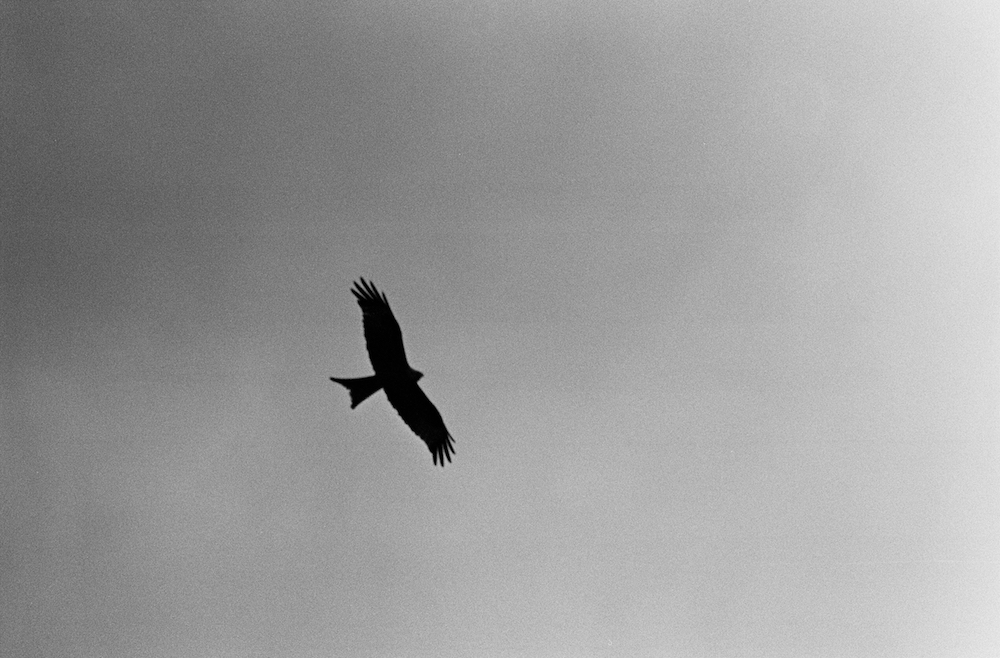Beacon Bound, Part V: Equilibrium
/Since Spring 2018 we have followed Nicholas Herrmann as he walked the length of The Ridgeway, an ancient road stretching for eighty-seven miles across chalk downland between Overton Hill and Ivinghoe Beacon, in memory of his grandfather. With this final installment, Nicholas’s journey is completed. You can read all five parts of his walk here.
Tiredness threatens to fell me like a storm-damaged tree. It squats in my skull, crawls down my body: tightening tendons, tying muscles into knots. My back is rigid, my legs are locked, and the ankle injury that started in Uffington has spread to the ball of my foot. I feel semi-petrified, almost stone. At the Ridgeway’s eastern extremity, I step from the car stiffly. I might have forgotten to stretch this morning, or I could have a cold coming on, but maybe this is what seventy-three miles feels like – an accumulated tiredness, the journey catching up with me, the way adding weight. It’s the eve of my thirtieth birthday, and I feel old.
I just have to make it another fourteen miles, today only half: Coombe Hill to the hamlet of Hastoe. We arrive to mud and wind, the night’s rain wiping the world of colour. A short walk along a road and across a field takes us to the lip of the scarp, which we traverse like trapeze artists, balancing high above the Aylesbury Vale. Shortly, we reach the Coombe Hill Monument: erected in memory of the men from Buckinghamshire who died during the Second Boer War. The huge column has on top a torch of gilded flame, with four stone orbs positioned on plinths around its base.
It marks the Edge of the World. This is where, on Sundays, my grandparents would bring the children to run off steam when they lived in nearby Chalfont. I can see why they gave this place such a striking title: sitting on one of the highest spurs of the Chilterns, the monument marks a precipice, transforming the hill into a battlement. With my neck craned, I circle the column that has twice been damaged by lightning since it was first erected in 1904. Before pushing on, I look back the way we’ve come, searching the horizon for the scrawl of the Berkshire Downs. Gradually, the sun pushes through the tangled sky to illuminate the landscape, bringing back words from another Ridgeway memorial: Light after darkness. Hope in light.
The path eases us on to Bacombe Hill, the last chalk hill before the Wendover Gap, and down into Wendover. We stroll along the main street past the town’s many pubs, resisting the siren song of red lions and white swans, opting instead for take-away pasties to warm our wind-bitten hands. I scold my mouth on the cheese and onion filling, as ahead of us clouds shroud the hillside, Wendover Woods becoming Fangorn Forest in my mind.
Then, through a small park and past the burgeoning Wendover Memorial Community Orchard, planted for the fifty-nine men from the Parish of Wendover who died in the First World War. The River Misbourne joins us for a way – a charming chalk stream that runs clear and shallow. Once more, the path slopes gently upwards and away from the town, the ground yellowing as we trample the last of autumn into the earth. We’ve walked all the way to winter: the trees are skin and bone now, bark and branch. Old chalk pits riddle the hill like ancient craters from a meteor storm. As we approach the summit, a sudden gust of wind eviscerates the clouds, the sun hurling our shadows into the trees and igniting the forest.
We reach the car as the world grows dim, vapour trails skating across the glacial sky. Back at Coombe Hill, we walk out to the Edge of the World, its torch now dark. On a cold bench we drink the last of our coffee, as the lights down in the Vale – Wendover, Oxford, Aylesbury – shiver into life.
*
The last day starts with a detour. A mile or so from Hastoe is Hardings Wood, a sixteen-acre patch of ancient forest that Richard Mabey bought in the early 1980s, turning it into a community wood project to clear out inappropriate plantings, and free up regeneration. When Mabey’s depression struck, the land was almost lost, saved at the last minute by a local trust set up by two of his friends. It’s a difficult place to find – at first we drive past the coordinates, expecting a sign or stopping place. After consulting the map, we double back to find the entrance hidden beside a narrow country lane. The wood itself is steep and compact, the path barely visible beneath the brambles. It feels untouched, almost forgotten. I’m with my parents and brother for the final day of our journey, the four of us winding our way to the wood’s centre where we unpack our flasks and have coffee in the trees. The bitter steam mingles with the smell of the forest floor: earthy and warm. It’s quiet, the wood sheltering us from the morning’s chill. Above, beech trees bend in the breeze that cannot reach us.
I don’t know if my grandfather ever came here. I never spoke to him about Richard Mabey – I only discovered the writer’s work this year. But something about Mabey reminds me of John; the two seem like kindred spirits – the same generation, the same interests, the same bewildering knowledge. I know my brother bought him The Cabaret of Plants, and he owned a copy of Flora Britannica that he kept on a shelf guarded by dragons. Perhaps John did make the trip here once, or at least imagined he was here, sipping coffee in the leafy quiet beneath a creaking beech as he flicked through Nature Cure or Home Country.
On the Ridgeway, we amble along the tree-lined King Charles Ride – the straight, main path through the woodland of Tring Park. Further on, my mother picks a palmful of rose hips and shows me how to eat them, gently squeezing out the sour orange jam. To me, rose hips aren’t delicacies – they’ll forever be ‘itch bombs’, the stuff my friends and I would put down each other’s backs at school when we weren’t pelting each other with ‘puff balls’, the strange white berries that burst on impact and popped underfoot. I find these beside the path, too: snowberries. My father tells me he used to do the same, weaponising nature in the playground. I picture him tearing around Coombe Hill with a fistful of puff balls, and wonder if John ever did the same. To children, some things are so perfect, they’re obvious. Twenty years ago, the site of rose hips and snowberries would have caused the walk to descend into war, but my brother and I move on, leaving behind the ammunition and continuing into the next field.
We cross over the A41, where from the footbridge I glimpse the Beacon for the first time. My feet feel lighter as we hurry past the train station at Tring – a town famous for a pair of dressed-up fleas at its Natural History Museum, which John loved and took us to see when we were small. We pause on a bench at the foot of a hill to look back at the town. The final outpost before the Beacon.
As we start the last ascent, I feel the familiar swell of fatigue. My family must feel it too – the next couple of miles are covered in silence. We crunch over beech masts and climb through a wood, emerging to turbulence. The end is now in sight. We can feel its pull. Our pace quickens: a race against the dying of the light. Beneath us, a disused quarry floods the landscape with green water. As if to urge us on, a red kite sweeps up the hillside and hovers unsteadily overhead, before pitching and rolling away. Our party continues, floundering along the undulating ridge, the distance between us growing, the Beacon bobbing in and out of site like a life raft.
I wait for my father at the bottom of Ivinghoe Beacon, and together we finish the trail. A trig point and a map are waiting at the top. We trace the path with our fingers, recalling the places we’ve passed through. Then we walk to the edge and look back towards Avebury, finding nothing much in the haze. The wind soars up the slope and swirls around us; in the Vale, the clouds lean on Ivinghoe. The forecast promised rain this weekend, but miraculously not a single drop has fallen.
Before heading back, I whistle across the valley, weee-ooh, ee oo ee oo ee oo, and wait for a reply that doesn’t come.
It’s been twelve months and a cycle of seasons since my grandfather died and we unfolded the map. It’s hard to remember a time before the Ridgeway, and I don’t want to. The path has been a lifeline, a conductor, a tether. It’s allowed me to learn about John, understand the rhythms of his mind. Now I’m faced with the end: in front of me the path stops, cut off by a steep slope, the lights of Leighton Buzzard blocking the way ahead. But when I turn to leave, I realise where I’m standing isn’t the end at all. It’s the beginning of the trail – the old road is unfurling in front of me, eighty-seven miles to the west. It’s all yet to come: the beechwoods and berries, Thames and downs, the castles, chalk and sarsens. On the way back to the car, my father and I start discussing where to walk next, making plans for the new year.
When a star dies, the collapse can create an event of such immense gravitational force, matter is compelled from far and wide, and all light is extinguished. That point in space, once brilliant and warm, turns impossibly dark.
But after the collapse, the remnants might form something new. Drifting through space to gather together, finding each other, beginning to grow. And maybe, if the conditions are right, infalling molecules will gather momentum to create light from nothing; a blinding equilibrium to eradicate the dark.
Light after darkness. Hope in light.
The farewell was beautiful.
About the author:
Nicholas Herrmann is a writer and photographer based in Bath. His work has appeared in journals and online, and his writing has been shortlisted for the Bath Novel Award and Janklow and Nesbit Prize. He is a graduate of the Creative Writing MA at Bath Spa University. He is currently working on his first novel. You can find him on Twitter: @NickPSH.



































